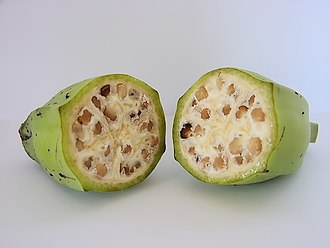Wild type
Wild Type
The term wild type refers to the phenotype of the typical form of a species as it occurs in nature. In genetics, it is used to describe the standard or reference type, which is the most common form or allele of a gene in a population. Wild type alleles are considered the "normal" alleles, as opposed to mutant alleles, which are variations that arise through mutation.
Genetics
In genetics, the wild type is the allele that is most frequently observed in a natural population. It is often used as a reference point for identifying and studying mutations. The wild type allele is typically dominant, but this is not always the case. In some instances, the wild type can be recessive, depending on the genetic context and the specific trait being examined.
Phenotype
The phenotype of an organism is the set of observable characteristics or traits, such as morphology, development, biochemical or physiological properties, and behavior. The wild type phenotype is the standard or "normal" phenotype that is observed in the natural environment. It serves as a baseline for comparison with mutant phenotypes, which may exhibit variations due to genetic mutations.
Importance in Research
Wild type organisms are crucial in biological research as they provide a baseline for understanding the effects of genetic mutations. By comparing wild type and mutant organisms, researchers can identify the functions of specific genes and understand how genetic variations contribute to different traits and diseases.
Examples
One example of a wild type organism is the wild-type banana, which is depicted in the image to the right. Unlike the cultivated bananas that are commonly consumed, wild-type bananas contain seeds and have a different texture and flavor. This distinction highlights the differences between wild type and domesticated or selectively bred organisms.
Related Pages
Transform your life with W8MD's budget GLP-1 injections from $125.
W8MD offers a medical weight loss program to lose weight in Philadelphia. Our physician-supervised medical weight loss provides:
- Most insurances accepted or discounted self-pay rates. We will obtain insurance prior authorizations if needed.
- Generic GLP1 weight loss injections from $125 for the starting dose.
- Also offer prescription weight loss medications including Phentermine, Qsymia, Diethylpropion, Contrave etc.
NYC weight loss doctor appointments
Start your NYC weight loss journey today at our NYC medical weight loss and Philadelphia medical weight loss clinics.
- Call 718-946-5500 to lose weight in NYC or for medical weight loss in Philadelphia 215-676-2334.
- Tags:NYC medical weight loss, Philadelphia lose weight Zepbound NYC, Budget GLP1 weight loss injections, Wegovy Philadelphia, Wegovy NYC, Philadelphia medical weight loss, Brookly weight loss and Wegovy NYC
|
WikiMD's Wellness Encyclopedia |
| Let Food Be Thy Medicine Medicine Thy Food - Hippocrates |
Medical Disclaimer: WikiMD is not a substitute for professional medical advice. The information on WikiMD is provided as an information resource only, may be incorrect, outdated or misleading, and is not to be used or relied on for any diagnostic or treatment purposes. Please consult your health care provider before making any healthcare decisions or for guidance about a specific medical condition. WikiMD expressly disclaims responsibility, and shall have no liability, for any damages, loss, injury, or liability whatsoever suffered as a result of your reliance on the information contained in this site. By visiting this site you agree to the foregoing terms and conditions, which may from time to time be changed or supplemented by WikiMD. If you do not agree to the foregoing terms and conditions, you should not enter or use this site. See full disclaimer.
Credits:Most images are courtesy of Wikimedia commons, and templates, categories Wikipedia, licensed under CC BY SA or similar.
Translate this page: - East Asian
中文,
日本,
한국어,
South Asian
हिन्दी,
தமிழ்,
తెలుగు,
Urdu,
ಕನ್ನಡ,
Southeast Asian
Indonesian,
Vietnamese,
Thai,
မြန်မာဘာသာ,
বাংলা
European
español,
Deutsch,
français,
Greek,
português do Brasil,
polski,
română,
русский,
Nederlands,
norsk,
svenska,
suomi,
Italian
Middle Eastern & African
عربى,
Turkish,
Persian,
Hebrew,
Afrikaans,
isiZulu,
Kiswahili,
Other
Bulgarian,
Hungarian,
Czech,
Swedish,
മലയാളം,
मराठी,
ਪੰਜਾਬੀ,
ગુજરાતી,
Portuguese,
Ukrainian
Contributors: Prab R. Tumpati, MD

